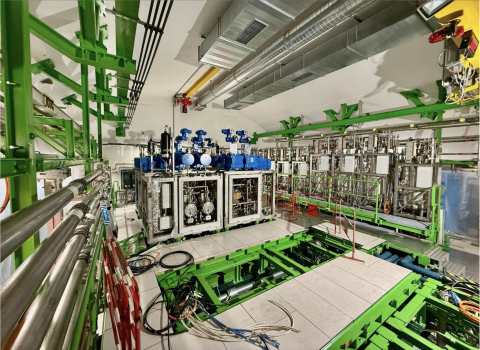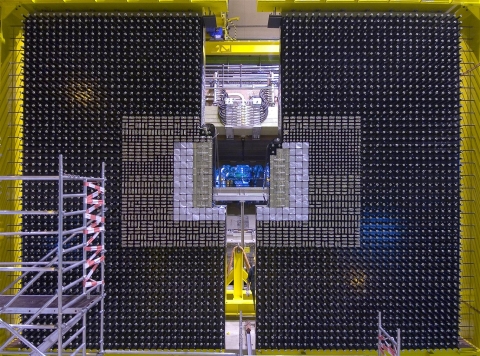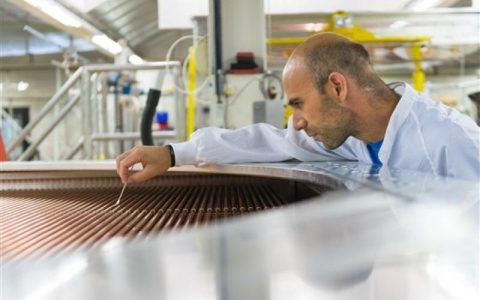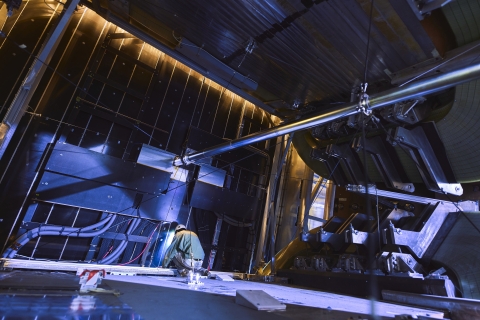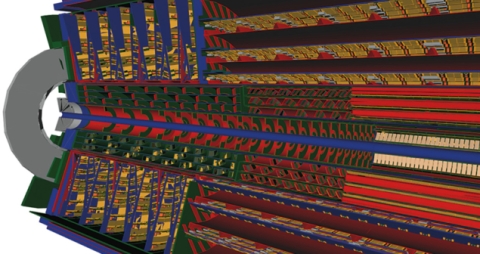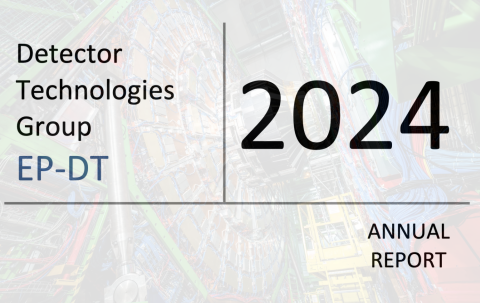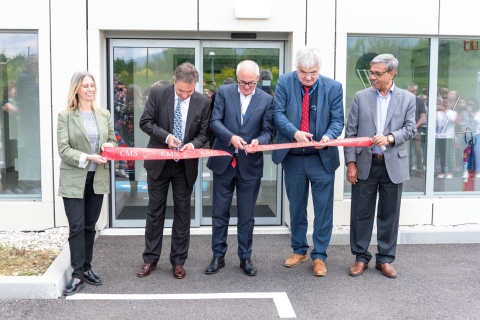April 2025 - June 2025
Next-Generation CO₂ Cooling Systems Powering the Future of ATLAS and CMS
Four CO2 cooling plants and accumulators in the service cavern of CMS in May 2025. (Photo by Jérôme Daguin) During recent shutdown periods, CERN engineers and technicians — in collaboration with the ATLAS and CMS teams — began installing the…
Read moreCalorimetry and light-based detectors for future experiments
The strategic R&D programme on technologies for future experiments by the CERN EP department is currently in its second phase from 2024 until 2028. Within this effort, Work Package (WP) 3 focusses on the development of calorimetry and light-…
Read moreA Day of Innovation: EP R&D 2025 in Focus
May 7th 2025, 8:15 AM. Many colleagues from all EP groups are gathering in front of the main auditorium. Colourful posters are being exhibited in the lobby. People who don’t see each other often profit from the occasion to chat a bit. It is the…
Read moreLHCb Upgrade II Scoping Document
CERN Research Board backs “Middle” scope for LHCb Upgrade II With the CERN Research Board’s endorsement on 14 April 2025, the LHCb Upgrade II Scoping Document has cleared its critical design-scope review, moving the project from proposal to…
Read moreThe ATLAS Inner Tracker Integration at CERN
Introduction The ATLAS ITk (Inner TracKer) is a new all-silicon tracker that will replace the existing ATLAS Inner Detector (ID) to meet the requirements imposed by the high-radiation and high-hit occupancy environments of the HL-LHC (High-…
Read moreA word from the EP Deputy Department Head - June 2025
As I write this editorial, the 2025 experimental programme is in full swing, and the high temperatures are a reminder that summer is here. Many of you will be extremely busy with the ongoing data-taking, producing new results for the summer physics…
Read moreShaping Detector Innovation: Highlights from CERN’s EP-DT Group Annual Report
The Detector Technologies (EP-DT) group has played a vital role in 2024 in advancing experimental capabilities across CERN’s LHC and non-LHC programmes. As outlined in the group’s recently published annual report, their contributions span from…
Read moreFCC Week 2025: First Gathering After Feasibility Study to Discuss the Way Forward
FCC Week 2025, held in Vienna, provided a timely opportunity to review the project’s scientific and technical progress, ushering in the next phase of design and development. The results of the Feasibility Study will serve as a key input to the next…
Read moreCWDM Link: A High-Bandwidth Optical Upgrade for LHC Beam Instrumentation
The Versatile Link project[1] was initially developed to provide a point-to-point radiation-hardened optical link common to most CERN experiments which upgraded during Long Shutdown 2 (LS2). The Beam Instrumentation group (SY-BI) also adopted it as…
Read moreCMS Inaugurates Its New Control Room
On 15 May 2025, CMS officially inaugurated its new control room at Point 5 in Cessy, France. The celebration brought together guests from CERN management and representatives of all LHC experiments to mark this significant upgrade to CMS’s…
Read more
